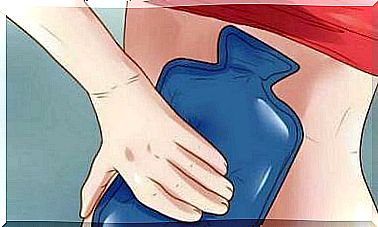Discover Some Essential Information About Halothane

Although its popularity has dropped considerably in Europe, you need to know some essential information about halothane.
Halothane is a drug commonly used to induce general anesthesia. It is an anesthetic that is given by inhalation to induce rapid loss of consciousness, but in an easy way. Halothane has an unpleasant odor, is colorless and does not irritate mucous membranes.
Healthcare professionals use halothane to induce and maintain anesthesia in any type of surgery and in patients of all ages. But experts do not yet know the mechanisms by which inhaled anesthetic agents inhibit the perception of sensation and induce unconsciousness.
Doctors used halothane extensively between the 1950s and 1980s, both in adults and children. This drug was synthesized by CW Suckling in 1951 and was first used as an anesthetic in 1956. Halothane replaced other popular anesthetics at the time, such as cyclopropane.
Beginning in the 1980s, the popularity of halothane gradually began to decline due to the launch of new volatile anesthetics, such as enflurane and isoflurane. Although nowadays it is rarely found in developed countries, halothane continues to be used in the third world in veterinary medicine, being relatively inexpensive.
3 essential information about halothane
Dosage and administration

There are various aerosol devices useful in the administration of halothane. For example, there are open, semi-open or closed circuit systems. Medical staff use them interchangeably because they all provide satisfactory results.
The dose administered varies depending on the patient’s characteristics. In this regard, adults and the elderly can be given a concentration of 2-4% halothane in oxygen / nitrogen oxide to induce anesthesia. If the goal of specialists is to maintain anesthesia, a concentration of 0.5-2% halothane can be used. In the case of children, doctors can opt for a concentration of 1.5-2% to induce anesthesia and 0.5-2% to maintain it.
Contraindications to halothane
Specialists cannot administer this medicine to patients who have ever had malignant hyperthermia. At the same time, doctors do not recommend halothane to people susceptible to this problem. If the patient develops clinical symptoms such as jaundice or pyrexia following the administration of halothane, its future use is also contraindicated.
There are insufficient studies on the effects of halothane on pregnant women. Therefore, it is recommended to avoid general anesthesia with inhalants in the early stages of pregnancy. As for breastfeeding women, although doctors have detected the presence of halothane in breast milk, they have failed to determine how it affects infants.
Drivers and persons working with machinery must take into account that general anesthesia may affect their ability to perform their daily tasks. However, healthcare professionals have been using halothane for more than 30 years, with no significant consequences.
Side effects of halothane

Like any other medicine, halothane can cause side effects. Side effects are unwanted and unintended reactions that a patient may experience when he begins to be treated with a particular drug.
Halothane can trigger a hypermetabolic reaction of skeletal muscle which can eventually lead to malignant hyperthermia. Thus, specialists do not recommend its administration to patients who have suffered from this problem in the past.
The list of possible side effects of halothane also includes:
- Hypercapnia
- Muscle stiffness
- Tachycardia
- tachypnea
- arrhythmias
In addition, halothane can cause nausea, vomiting and liver problems. As you can see, these symptoms are not very specific. Medical staff should be very vigilant and, if any unusual symptoms occur, discontinue treatment.
conclusions
Halothane is a medicine administered by inhalation to induce or maintain general anesthesia. If you want to know more about halothane, do not hesitate to consult a doctor or pharmacist.









